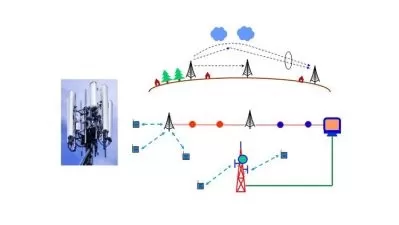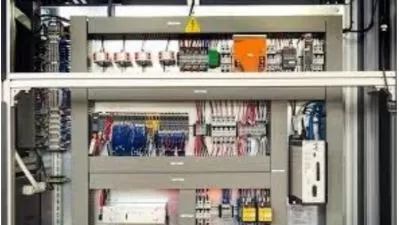ELEC2000 - Circuits, Signals & Systems
Jung-Chang Liou
2:55:54
Description
ELEC2000 covers detailed analysis on RLC circuits, signals and systems using Laplace and Fourier Transform
What You'll Learn?
- Understand the physical structure and mathematical models of capacitors and inductors
- Analyse RL, RC & RLC circuits using the first principles
- Understand fundamentally what Laplace transform is and does
- Simplify circuit analysis using Forced & Natural Response, element impedance and Laplace Transform
- Identify what a system is and why we use transfer functions
- Understand what Fourier Series & Fourier Transform are & do
- Design a simple digital filter using certain programs
- Understand how an analogue filter is designed and its limitations
Who is this for?
More details
DescriptionThe goal of this course is for students who have completed Introduction to EE course to continue improving their understandings and skills on Circuit Analysis. It covers all the important techniques that you will need during your entire Electrical Engineering career, including Laplace Transform, Element Impedance, Forced & Natural Response, Poles & Zeros, Transfer Function, Frequency Response, Fourier Series & Fourier Transform and Filter Design.
This course starts with dissecting capacitors and inductors. You will have a much solid understanding of the working principles of these two fundamentally important elements. This first section will also help you revise some of the important concepts that you learned from the previous course, such as Ohm's Law, KVL and KCL. You will learn how to analyse simple RL & RC circuit using the first principles.
The second section of the course introduces the powerful Laplace Transform. You will learn what it is, why we study it and how to apply it on circuit analysis. You will also see how we go from Laplace Transform to Element Impedance and how we use Laplace in conjunction with Forced & Natural Response. Here we will clarify many questions that most students have over the years. For example, what is the difference between the impedance jwL and sL?
The third section focuses on Systems. You will learn what Systems and Transfer Functions are, how it helps us to have flexible input and output signal, and how to combine systems mathematically. Here we will go through producing a Bode plot and a Phase Plot (i.e. Frequency Response) using the Transfer Function.
Section 4 deals with Signals. You will learn the difference between Fourier Series & Fourier Transform. We will also learn to apply Fourier Transform on a simulated signal as well as on an audio file using a Python program.
Lastly, we will go through a practical example of designing a filter. You will see how we can use all the knowledge that we acquired to design a digital and an analogue filter.
Who this course is for:
- Anyone who has completed the introduction to Electrical Engineering Course and who wants to learn more about circuit analysis
- Anyone who wishes to learn about Control Systems, Signal Processing or Advanced Electronics must learn the fundamentals covered in this course
- Anyone who wishes to have a clear understanding of Laplace Transform, Fourier Series/Transform, Transfer Function, Frequency Response, Natural & Forced Response and Poles & Zeros
The goal of this course is for students who have completed Introduction to EE course to continue improving their understandings and skills on Circuit Analysis. It covers all the important techniques that you will need during your entire Electrical Engineering career, including Laplace Transform, Element Impedance, Forced & Natural Response, Poles & Zeros, Transfer Function, Frequency Response, Fourier Series & Fourier Transform and Filter Design.
This course starts with dissecting capacitors and inductors. You will have a much solid understanding of the working principles of these two fundamentally important elements. This first section will also help you revise some of the important concepts that you learned from the previous course, such as Ohm's Law, KVL and KCL. You will learn how to analyse simple RL & RC circuit using the first principles.
The second section of the course introduces the powerful Laplace Transform. You will learn what it is, why we study it and how to apply it on circuit analysis. You will also see how we go from Laplace Transform to Element Impedance and how we use Laplace in conjunction with Forced & Natural Response. Here we will clarify many questions that most students have over the years. For example, what is the difference between the impedance jwL and sL?
The third section focuses on Systems. You will learn what Systems and Transfer Functions are, how it helps us to have flexible input and output signal, and how to combine systems mathematically. Here we will go through producing a Bode plot and a Phase Plot (i.e. Frequency Response) using the Transfer Function.
Section 4 deals with Signals. You will learn the difference between Fourier Series & Fourier Transform. We will also learn to apply Fourier Transform on a simulated signal as well as on an audio file using a Python program.
Lastly, we will go through a practical example of designing a filter. You will see how we can use all the knowledge that we acquired to design a digital and an analogue filter.
Who this course is for:
- Anyone who has completed the introduction to Electrical Engineering Course and who wants to learn more about circuit analysis
- Anyone who wishes to learn about Control Systems, Signal Processing or Advanced Electronics must learn the fundamentals covered in this course
- Anyone who wishes to have a clear understanding of Laplace Transform, Fourier Series/Transform, Transfer Function, Frequency Response, Natural & Forced Response and Poles & Zeros
User Reviews
Rating
Jung-Chang Liou
Instructor's Courses
Udemy
View courses Udemy- language english
- Training sessions 14
- duration 2:55:54
- Release Date 2023/02/13











